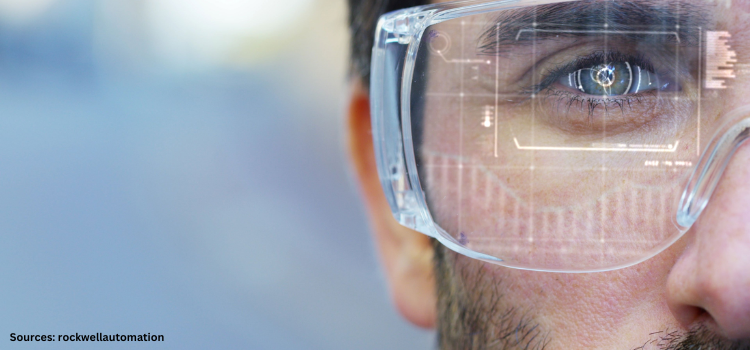The Future of Eyewear: Trends and Innovations to look out for
17-Feb-2025

Introduction
As new technologies emerge and evolve, the eyewear industry continues to see innovations that change how we use glasses. According to data from Emergen Research, the global eyewear market was valued at $169.82 billion in 2022, with an expected revenue compound annual growth rate of 8.1% in 2032. Industry experts attribute this market growth to the prevalence of eye-related issues and conditions such as myopia or shortsightedness and a rising demand for multi-functional eyewear.
At the same time, the prevalence of ocular diseases such as refractive errors, age-related macular degeneration, cataracts, diabetic retinopathy, glaucoma, and other conditions fuels the need for proper eye care and eye health maintenance. This is facilitated by digital technology and ongoing research. In this post, we'll explore some of the future eyewear trends and innovations in eyewear that we can anticipate:
The rise of smart glasses
A prominent trend in recent years has been the surge in smart and wearable technology. Eyewear and tech companies have released their takes on smart eyewear over the last few years, each serving specialized purposes. Shifting away from the clunky and futuristic design of the now-obsolete Google Glass, modern smart glasses have become increasingly discreet in design with more features and capabilities.
At the recent CES 2024, wearable tech company Vuzix showcased their latest Vuzix Z100 smart glasses designed for occupational use. Seamlessly integrating with iOS and Android devices, the smart specs enable an augmented heads-up display that enhances workflow optimization. The Vuzix Z100 glasses include a 640x480 monochrome green display, microLED waveguide technology, and a wide 30° field of view. Notably, the smart glasses also support prescription lenses for wearers needing vision correction.
Enhanced sports eyewear
Of course, the eyewear industry ensures that non-smart glasses aren't left behind. These days, functional eyewear like sports glasses and sunglasses for specialized outdoor use also comes with many features to help improve performance and comfort during specific outdoor activities such as fishing, boating, skiing, and driving.
Oakley, a sports eyewear brand, offers a lineup of prescription sunglasses featuring patented technologies designed for various outdoor activities. The Oakley Clifden, for example, is built for advanced mountaineering thanks to its side shields protecting your eyes against the elements. Like many of Oakley's current products, the Clifden features the company's Prizm™ lens technology to help enhance color, contrast, and detail during most outdoor activities. Additionally, the Unobtainium® nose pads ensure the shades won't slip or fall during more physically demanding outings.
Eyewear and assistive tech
At this point, the right eyewear can serve multiple purposes. Aside from helping in everyday and work activities, wearing glasses or sunglasses also provides as much-needed eye protection from the sun. Most recently, we discussed IrisVision, a vision health company, and their electronic glasses.
In the post, we highlighted some of the innovative technologies transforming assistive tech for the disabled and elderly. Currently, the assistive tech is registered with the US FDA as a Class-1 medical device and is a wearable low-vision aid. Integrating a Samsung VR headset with a smartphone, Iris Vision’s electronic glasses can assist individuals struggling with eye conditions such as diabetic retinopathy, cataracts, and glaucoma. Using this technology, individuals can see and read even with compromised vision.
Embracing sustainable eyewear
Finally, another eyewear trend to look out for is the rapid growth of sustainable eyewear. For the eyewear industry, sustainability initiatives involve using environmentally friendly materials to produce and deliver eyewear products.
For example, many eyewear companies and startups today have designed glasses featuring plant-based frames. Austrian eyewear brand Neubau Eyewear recently announced its bio-based line 3D-printed from materials like natural3D (100% bio-based) and naturalPX (65% bio-based). As mentioned in our introduction, consumers are becoming increasingly eco-conscious, so a future of more sustainably produced products can help reduce the carbon footprint and plastic waste produced during eyewear manufacturing.
Add Comment
Related Blogs
Apple and Samsung Claims 25% of Mobile Accessories Market with High-Quality Offerings
The NMSC analysis shows that the mobile phone accessories ma...
5 Tips For Growing Your Online Fashion Brand in India
India's online ecommerce market is booming everyday, and by 2030, it is pred...
Things You Should Know about Fast Fashion
Shopping used to be a once or twice a year event. The last decade or so has transformed this trend and made it into a more regular...











